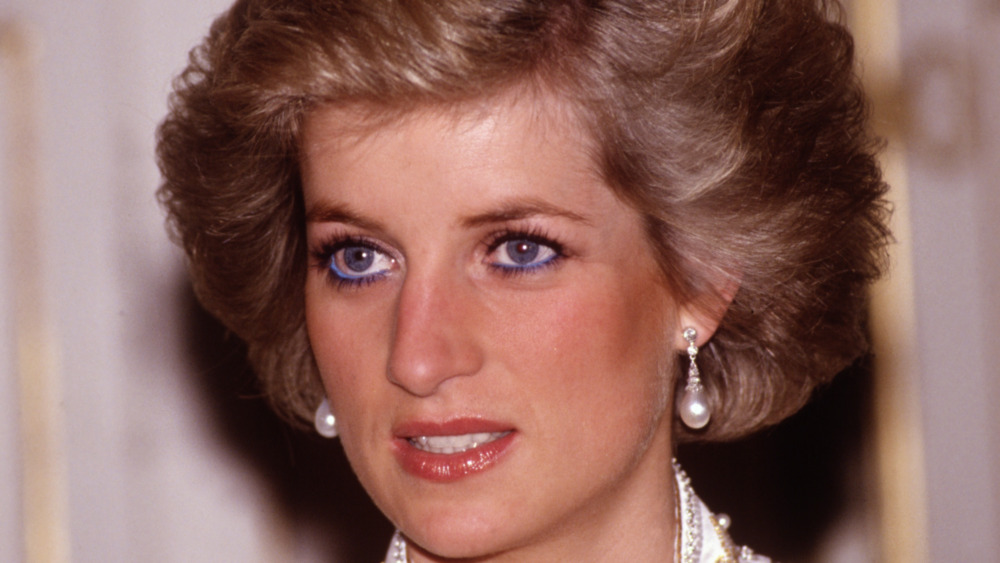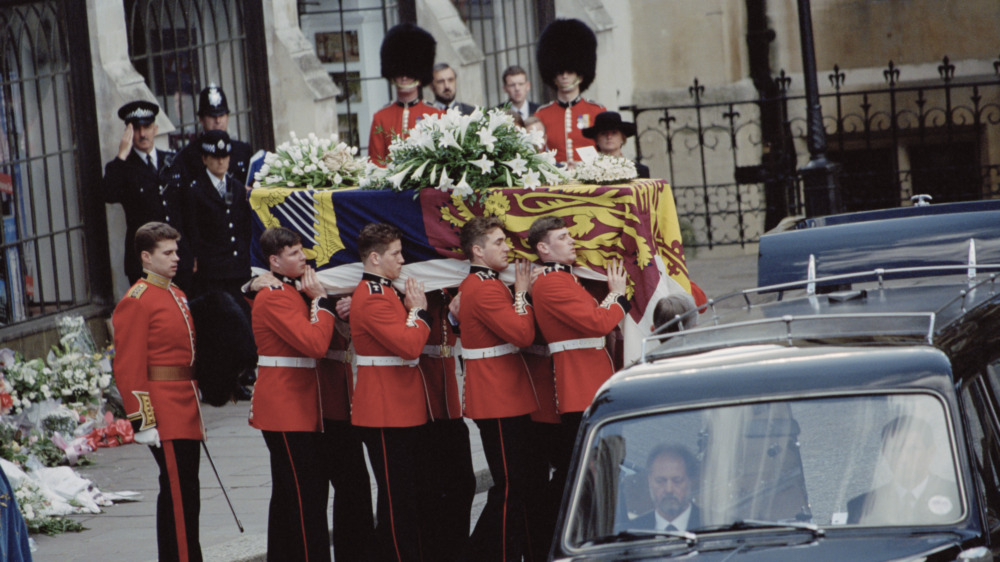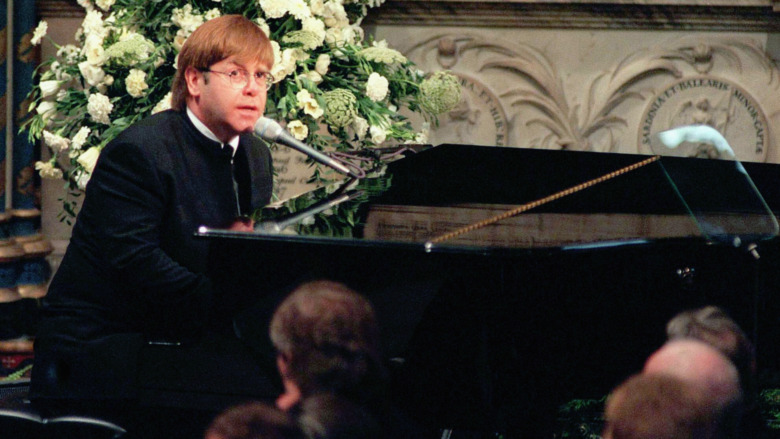This Is Why There Was No Open Casket For Princess Diana's Funeral
In the days following Prince Phillip's death on April 9, 2021, and leading up to his April 17 funeral, much has been made of how the preparations for the late husband of Queen Elizabeth II's funereal procession and ceremony have already deviated from the norm. Specifically, media outlets have focused on two categories: changes made to the Windsor-Mountbatten patriarch's funeral ceremony due to restrictions imposed by the ongoing coronavirus, and changes made to honor Prince Philip's legacy.
For those not already in the know, Prince Philip will be interred in a lead-lined and oak coffin, and there won't be the standard funeral customs for senior royals, like the heavily public procession through the streets of London to St. George's Chapel. And as can be expected, people have begun comparing the upcoming ceremony to the most striking and somberly iconic royal funeral of the late 20th century: that of Diana, Princess of Wales, whose Sept. 6, 1997 funeral was viewed by 2.5 billion people, per the BBC. As viewers remember, Princess Diana had a closed casket. What was the reason behind that decision?
Princess Diana's closed casket had to do with her tragic death
Despite the fact that Princess Diana had divorced Prince Charles a year prior to her death in 1997 — which resulted in her technically losing the title of "princess" — she was still allowed a ceremonial funeral, which is typically reserved for members of the royal family.
Her procession adhered to traditional British custom, including a closed casket, per one British ex-pat and blogger. But could there have been another reason for choosing to have a closed coffin?
While the decision to have Diana's coffin be closed might have been influenced by British tradition, another factor might have also been at play: the tragic circumstances surrounding her August 1997 death. Princess Diana's life was cut short after she and her boyfriend Dodi Fayed were killed in a car accident in France. She had multiple injuries, per Newstalk ZB, and an autopsy had been performed. Per CelebAnswers, common sense dictated it would be difficult to prepare her body for an open casket.
The decision to have Princess Diana's closed coffin sealed by a lead lining (another custom of the British monarchy, in order to preserve the body, per Metro UK) also gave the late royal a sense of privacy and dignity. It gave everyone a chance to remember Diana in a way that upheld how she lived, rather than how she died.
Princess Diana's funeral was an international spectacle
Mourners lined the streets of London to pay their respects for the late Princess Diana and another 2.5 billion watched on TV, per History.com In 1997, that was almost half the world's population. Many celebrities, fashion designers and politicians were also in attendance at Diana's funeral.
Per Town & Country, famous attendees included Tom Cruise, Nicole Kidman, Tom Hanks, Donatella Versace, Karl Lagerfield, Anna Wintour, Richard Branson, Hillary Clinton, who was the first lady of the United States at the time, and more. At the funeral, Elton John, who was a friend of Princess Diana's, played his own version of "Candle in the Wind," a song from 1973 that was originally written for Marilyn Monroe after she died. It was released as a single after the performance, and the moving tune has sold more than 33 million copies worldwide to date, making it the best-selling chart single of all-time, per Forbes.
But these aspects weren't the only things that made Princess Diana's funeral unique. Perhaps the most poignant moment involved her father-in-law, Prince Philip, and her young sons, Princes William and Harry.
Prince Philip walked alongside Prince Harry and Prince William at their mother's funeral
Prince Philip was very concerned about the emotional well-being of his grandsons after their mother died. "We were all talking about how William and Harry should be involved and suddenly came Prince Philip's voice," a former government relations director told the Evening Standard, per Today. "We hadn't heard from him before, but he was really anguished. 'It's about the boys,' he cried. 'They've lost their mother.'"
Princess Anne, Queen Elizabeth and Philip's daughter, remembered the moment when Philip offered to walk with the boys in the funeral procession, "I seem to remember them saying that, in fact, it was a question of, 'If you'll do it, I'll do it,'" she recalled in an interview with ITV. "That was him as a grandfather." Philip famously joined Prince William, then 15, Prince Harry, then 12, Prince Charles and Princess Diana's brother, Earl Spencer, on the walk from Kensington Palace to Westminster Abbey.
"It wasn't an easy decision and it was a sort of collective family decision to do that," William said of the joint family decision to include him and his brother in the processional, per the BBC. "There is that balance between duty and family and that's what we had to do." (Decades after Diana's death, Harry revealed mixed emotions about their very public inclusion in the funeral.) Perhaps needless to say, their mother's funeral clearly had a profound effect on Diana's sons.




